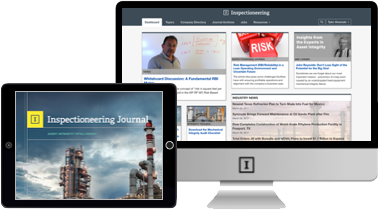Avoiding cracking under pressure when managing high-energy piping systems is common subject matter in the power industry. Just as high-energy piping can give way to pressure, stress and fatigue, so can the people in charge of operating them when trying to determine what to inspect, where to inspect, and what to do with those inspection results once they have them.
We have all heard the term, “the squeaky wheel gets the grease.” In the case of power plants that squeaky wheel tends to be boiler tube failures. Unfortunately, piping is quiet, until it isn’t. In most cases, I personally enjoy surprises; however, when it comes to safety, surprises are NOT welcome. It goes without saying that high-energy piping systems are essential to the safe and cost-effective operation of power plants. Unfortunately, the likelihood for piping failures increases with the age of the systems involved. The question isn’t if piping systems will fail, the question is WHEN they will fail.
Prolonged operation, particularly at elevated temperatures, results in metallurgical degradation. This in-turn increases the potential for cracking and crack propagation until a final failure stage is reached by the component. As a result, power plant operators have become increasingly cognizant of the importance of condition assessment evaluations for high-energy piping systems.
The difficult task of managing the safety and integrity of these systems becomes even more complicated when many piping managers are faced with specific challenges that have become a trend in the power industry. These challenges include the reduction of onsite engineers, aging workforces, aging equipment, and the need to remain competitive in a challenging global energy market. Piping managers are routinely faced with the complex task of evaluating the current condition of their equipment, forecasting outage budgets and schedules, and performing risk assessments. Additionally, insurance companies are increasingly requiring inspection and maintenance records that often times are not up-to-date or readily available. This notion was recently reinforced when I attended a conference where James Chiles, author of Inviting Disaster, stated an interesting and relevant fact of the power industry: “over half of the senior staff will be retiring by 2020. Knowledge capture that provides information that is usable and readily available is paramount.”
The solution to safely maintaining the integrity of high-energy piping systems involves taking a comprehensive approach to piping management utilizing unit specific operational training, advanced data capture and management, and strategic inspection, maintenance, and replacement prioritization. Implementing this comprehensive approach has resulted in avoiding both catastrophic and leak type failures for plant managers. Utilizing a unit specific, targeted plan enables utility owners and operators to succeed in today’s competitive market by increasing the unit’s reliability and availability without sacrificing safety or environmental standards.

















Comments and Discussion
Add a Comment
Please log in or register to participate in comments and discussions.